QuestionHi,
I have a 2 months old lab puppy whom I am trying to train..despite my efforts of hands off training he has been continously biting me resulting into scars and bleeding.
He has scratched and nipped every family member in the house and no matter what we have not used cruelty on him.
he growls, barks and even becomes ferocious if we raise our voice to say "no" to his behaviour. Please help
Also please suggest a good training program for my pup.
AnswerGreetings, and thank you for contacting All Experts!
Labs are notoriously known for being little ''biting machines'' when they are puppies. It takes lots of patience and consistency to curb these behaviors. In order to better understand biting behaviors in puppies and learn how to curb them, let's take a look at how these issues are taken care of in the canine world. From one of my article, on bite inhibition:
''When a puppy is in a litter with its mother and its litter mates, important life lessons are learned. One of the most important life lessons taught is bite inhibition. Bite inhibition is generally taught when puppies are between the age of five to eight weeks. For this reason, it is imperative to not separate puppies from their mom and litter mates earlier than eight weeks. Do it sooner, and you may end up with a puppy lacking good social skills and with little or no bite inhibition. I am not sure where your puppy is coming from, but a reputable breeder will usually somewhat work on these issues to some extent before sending a puppy to a new home. Generally, behaviors as in your Lab puppy are seen when removed too early from the litter, when a puppy was in a very large litter, or when a puppy comes from a pet store or a backyard breeder. However, sometimes puppies as such simply are genetically more predisposed to engage in more obnoxious behaviors and therefore may be a challenge to train.
Now, upon watching a litter of puppies one can see how bite inhibition is taught. When a puppy is playing too rough with a litter mate, the litter mate will make a sharp ''yelp'' and withdraw from playing. The sharp yelp is the puppy's way to say ''Ouch! I will not play with you until you learn how to play nicely''. With this happening over and over, the biting puppy learns that in order to play, it must inhibit its bite and therefore bite softly, being careful not to injure.
The same lessons are taught by the mother, which often resorts to meaningful corrections that the puppy quickly understands, She may growl and bare her teeth to tell the puppy to stop and if the puppy does not get the message she will likely grabs the puppy by the scruff of his neck and gives him a little shake until the puppy recognizes her authority and submits by laying his ears back and keeping still for a moment.
Particularly obnoxious puppies are knocked over with a paw and given a small pinch with the mother's teeth, the puppy usually shrieks at this point, but this does not really hurt, it is just a symbolic correction to let the puppy firmly know that he has to put a stop to his rowdy behaviors. Once the puppy is still and shows signs submission, (ears laid back, averted eye contact, and an overall ''I give up'' posture) the puppy is let go. The puppy at this point, most likely will shake its fur, and shortly should go back to playing, but hopefully this time with a kinder approach.''
Now, that your puppy is two months old and is at home with you, he should come with these important life lessons in his mind. However, as mentioned earlier, this will not be the case if the puppy was removed from the litter earlier than eight weeks, or if the puppy was an orphan or is simply genetically wired to have behavioral problems. In these cases, you will need to be some extra effort to make up for all the time this puppy has lost in being taught these important lessons and may need the intervention of a dog trainer to teach proper manners. Puppy classes are generally a good place to start.
If you got your puppy just now, at eight weeks, he will have learned the basics of bite inhibition, but now he will need to refine them with you. Humans have a more sensitive skin than puppies, and therefore the puppy now must learn that not only he has to apply his bite inhibition with humans as well, but also be even more kind. It therefore helps to apply the same life lessons its mom and litter mates applied in a similar way.
So let's say puppy comes near you and nips your hands, you will say a loud ''awrrp''! like it really hurt bad, and suddenly withdraw playing by turning your back to the puppy and become still as a statue. Make sure your ''awrrp'' so loud and sudden that the puppy will remain surprised and startled stopping the behavior. When the puppy stops nipping, quickly give your puppy a toy to re-direct its nipping somewhere else, explains animal behaviorist Patricia McConnell. This will teach your dog that biting you is no fun and that the toy instead is. Repeat multiple times until your puppy grasps the concept.
If your puppy still engages in biting, then make the ''Awrrp'' noise and leave the room suddenly. Your puppy will soon learn that upon biting he loses his favorite playmate and it is no longer fun.
Your puppy is most likely not acting aggressively upon biting, but is simply playing a little bit too rowdy. Some puppies can be rambunctious, and sometimes obnoxious in their behaviors. They need to be taught calmer behaviors and that upon acting rowdy all play and attention suddenly comes to a halt. A main problem encountered in nipping puppies is that upon nipping, the owners instinctively draw the hand back which in a puppy's mind this is an invitation to play. This often incites the puppy in more nipping and biting. Never encourage play with your hands.
If your puppy is grabbing and tugging at the bottom of everyone's pants, use a toy to re-direct his attention to the toy instead to your pants.
Now, you state the puppy growls, barks and becomes ferocious upon being told ''no''. One important consideration is that you do not want to punish his growling. According to Pat miller, ''When you punish a growl or other early warning signs, you may succeed in suppressing the growl, snarl, snap, or other warning behavior''. This means a dog without a growl, will likely go to the next step and directly bite without growling. You can read more about this here:
http://www.petgrowth.com/index.php/topic,873.0/wap2.html
By growling, barking, your puppy is letting you know he does not like you to use your authority. Without seeing the puppy and its body language it is hard to say if this is stemming from fear or if this puppy is simply being a bully testing you, or if this pup may be genetically wired badly and therefore prone to have behavioral problems in the future.
I would remove the word ''no'' for now and encourage to stop biting by giving it no attention at all. If the puppy is too rowdy, he gets a time out and is put in a room until it chills out. Once out, the puppy is taught good behaviors, asking a nice sit before giving a treat for complying is a nice start. Then give the puppy some great toys to play with so the puppy knows that playing with humans is out of question (unless you play constructive games such as fetch). Remember that puppies need a lot of mental stimulation and opportunities to play, but you must make the rules for what behaviors are acceptable.
You need to (and all your family should) implement the ''nothing in life is free'' training method so your puppy learns some self-control and respects you and your family as leaders, here is a guide:
http://www.mobilespca.org/Uploads/Documents/Training%20Your%20Dog.pdf
After removing the word ''no'' and working on asking acceptable behaviors rather than reprimanding the bad, and after implementing nothing in life is free, you can then introduce some words to tell him to stop in his tracks and engage in another behavior instead.
So let's say he is biting on the leg of a chair, you will say ''eh, eh!'' (instead of no, which already has a negative outlook in his mind) to grab his attention and toss him a stuffed kong the moment he stops chewing. This way instead of saying 'no, you can't do this'' you are saying ''stop that, but do this instead'' which is much more acceptable and puts your puppy up for success.
Puppies at two months old are quite smart and can learn many tasks. I would recommend teaching this puppy focus on you to curb any unwanted behaviors, so instead of saying ''no'' to stop an unwanted behavior you can gain focus on you instead to put a stop to the behaviors here is how to accomplish this:
1) Start by investing in some tasty treats. Keep small bits of these treats handy by putting them in a fanny pack or treat pouch that goes around your waist.
2) Now work on this exercise: make a sound with your mouth, anything, a whistle, a smacking noise, just not words. Place a treat at your eye level and as soon as your puppy looks at you, give the treat. Repeat-repeat-repeat. The sequel is as such: you make sound with your mouth with treat at eye level/dog makes eye contact/you give treat. Do it a few times times until your puppy gets a hang of it. Timing is of the essence: the second your puppy looks at you the treat is delivered.
3) At some point something wonderful will happen: your puppy will look up at you in the eyes automatically when you make the noise in anticipation of the treat. By doing this you have taught your dog to focus on you using classical conditioning. Now you can apply this exercise successfully to change a bit your pup's attitude and calm him down. If your puppy let's say is chewing on your shoes, make the noise with your mouth and your puppy will stop and come looking for the treat. You can also add the command sit before giving the treat as he gets good at this.
So let's say your puppy is coming towards you and planning to nip? then make the sound with your mouth to get his attention and toss a ball to re-direct him on the ball. Then if he gets the ball, call him to you and put a treat under his mouth. He will drop the ball to get the treat, as he does this say ''drop it''. Then ask him to sit and toss the ball again, call him again, show the treat, say ''drop it'', ask him to sit and toss the ball. This is how you teach to fetch. By asking him to sit before tossing the ball, you will teach him self control since being calm gets the game going.
In case the puppy does not know how to sit, here is how:
''A dog learns how to sit by letting him focus on a treat. Call your dog to yourself, show the dog the treat and then position it right on top of his nose moving towards his back saying the word ''sit''. In order to get the treat at this level, your dog will very likely be forced to engage in a natural sit. If your dog jumps up to get the treat, you are keeping it too high. Once the dog sits, praise lavishly and give the treat so he can eat it. Repeat over and over.
I hope this helps, since I cannot see this pup's behavior it is hard for me to assess exactly what may be triggering what you seem to define as aggressive displays. Normally, a puppy this age should be focused on playing and discovering the world around him. He should be play-barking, play-growling, play-biting and play-fighting, but all in terms of play. You should not see ''ferocious'' behaviors normally at this age. If he is playing too rough, you must teach him the rules of play. If he is ''puppy'' barking and growling which are quite normal and acceptable behaviors, you can stop an eight-week-old puppy from barking or growling pretty easily, explains Ian Dunbar. In his words ''Be still yourself, so the puppy may calm down more easily. Say, "Puppy, Shush!" and waggle a food treat in front of his nose. Say, "Good dog," and offer the treat when the pup eventually shushes''. You can read more about this here:
http://www.dogstardaily.com/training/common-excuses-not-socializing-your-puppy
Make sure you socialize your puppy as much as you can. Your puppy needs socialization and training and lots of it, right away. Aggression at this age may be worrisome, but it can be managed if you work on preventing these aggressive displays from happening, enforcing your leadership using ''nothing in life is free'' and offering alternate behaviors. If the aggression continues, please refer to a dog behaviorist or a qualified dog trainer.
Disclaimer: Please consult with a dog behaviorist if your dog is displaying aggressive behaviors. Only a dog behaviorist may see and assess behaviors and offer the most appropriate behavior modification program tailored for your dog. Use extreme caution and make safety your top priority. By reading this answer you accept this disclaimer and assume full responsibility for any of your actions.

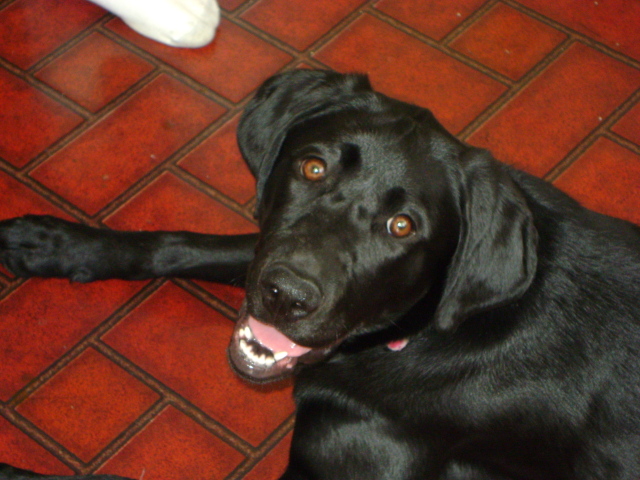 Black lab - 1 yr
QuestionSheba
QUESTION: My lab loves to bite her
Black lab - 1 yr
QuestionSheba
QUESTION: My lab loves to bite her
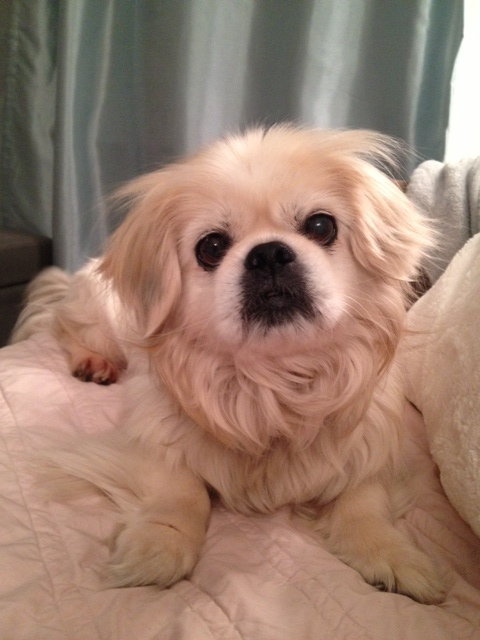 Nightmares?
Question
Beethoven
Hi Melissa, Ive had my very h
Nightmares?
Question
Beethoven
Hi Melissa, Ive had my very h
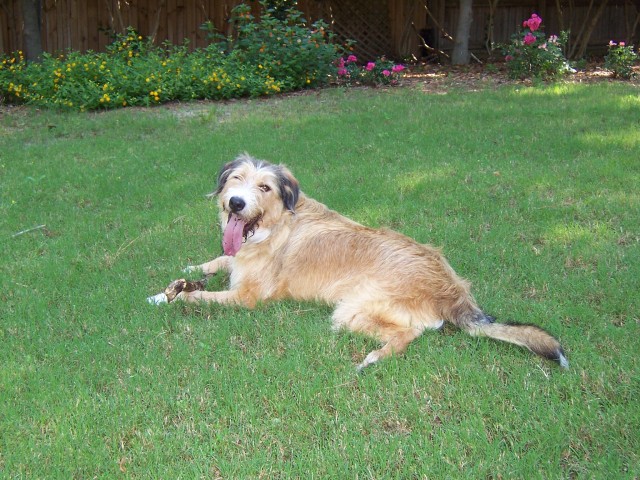 anxious dog
Question
Louie
Hi, We adopted a 2 year old male A
anxious dog
Question
Louie
Hi, We adopted a 2 year old male A
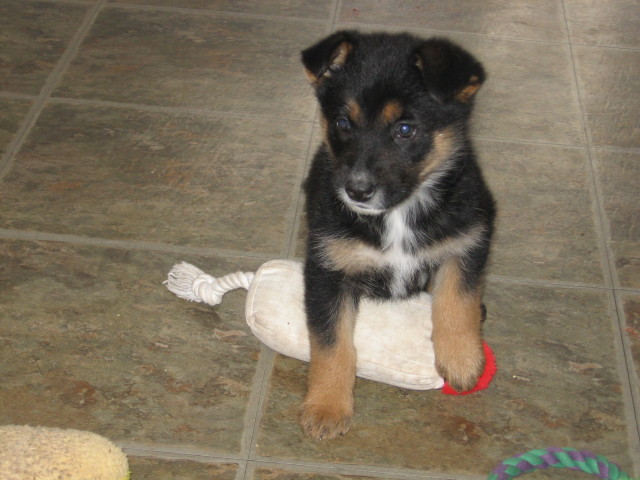 puppy problems
QuestionQUESTION: I am the proud owner of 2 german shep
puppy problems
QuestionQUESTION: I am the proud owner of 2 german shep
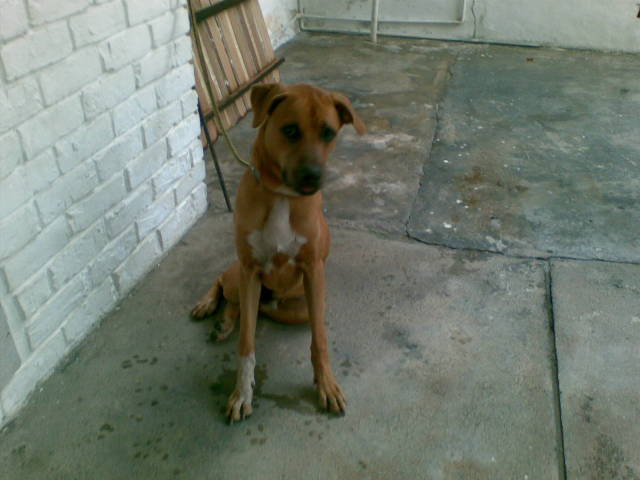 dogs behaviour
QuestionMy 8 months old Dusto
QUESTION: My puppy
dogs behaviour
QuestionMy 8 months old Dusto
QUESTION: My puppy